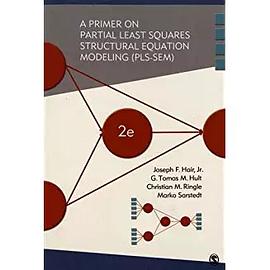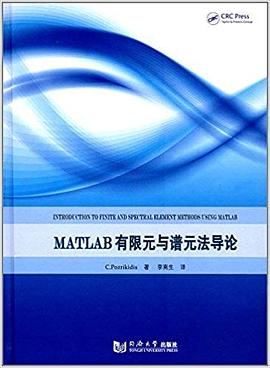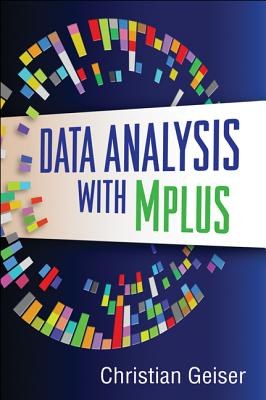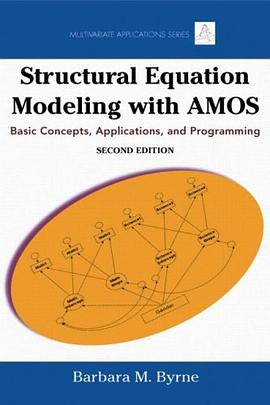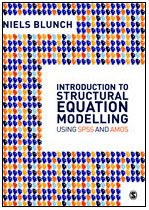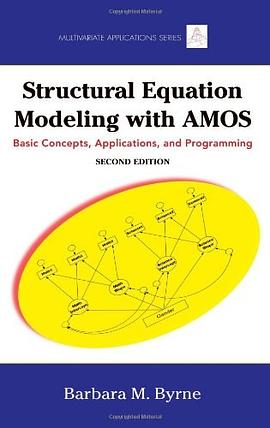
Meta-Analysis: A Structural Equation Modeling Approach pdf epub mobi txt 电子书 下载 2025
- 统计学
- statistics
- multivariate
- meta-analysis
- SEM
- E
- Meta-Analysis
- Structural Equation Modeling
- Quantitative Research
- Statistical Analysis
- Research Methods
- Social Sciences
- Psychology
- Education
- Data Analysis
- Effect Size

具体描述
Presents a novel approach to conducting meta-analysis using structural equation modeling.
Structural equation modeling (SEM) and meta-analysis are two powerful statistical methods in the educational, social, behavioral, and medical sciences. They are often treated as two unrelated topics in the literature. This book presents a unified framework on analyzing meta-analytic data within the SEM framework, and illustrates how to conduct meta-analysis using the metaSEM package in the R statistical environment.
Meta-Analysis: A Structural Equation Modeling Approach begins by introducing the importance of SEM and meta-analysis in answering research questions. Key ideas in meta-analysis and SEM are briefly reviewed, and various meta-analytic models are then introduced and linked to the SEM framework. Fixed-, random-, and mixed-effects models in univariate and multivariate meta-analyses, three-level meta-analysis, and meta-analytic structural equation modeling, are introduced. Advanced topics, such as using restricted maximum likelihood estimation method and handling missing covariates, are also covered. Readers will learn a single framework to apply both meta-analysis and SEM. Examples in R and in Mplus are included.
This book will be a valuable resource for statistical and academic researchers and graduate students carrying out meta-analyses, and will also be useful to researchers and statisticians using SEM in biostatistics. Basic knowledge of either SEM or meta-analysis will be helpful in understanding the materials in this book.
作者简介
Mike W.-L. Cheung, National University of Singapore, Singapore
目录信息
Acknowledgments xv
List of abbreviations xvii
List of figures xix
List of tables xxi
1 Introduction 1
1.1 What is meta-analysis? 1
1.2 What is structural equation modeling? 2
1.3 Reasons for writing a book on meta-analysis and structural equation modeling 3
1.3.1 Benefits to users of structural equation modeling and meta-analysis 6
1.4 Outline of the following chapters 6
1.4.1 Computer examples and data sets used in this book 8
1.5 Concluding remarks and further readings 8
References 9
2 Brief review of structural equation modeling 13
2.1 Introduction 13
2.2 Model specification 14
2.2.1 Equations 14
2.2.2 Path diagram 15
2.2.3 Matrix representation 15
2.3 Common structural equation models 18
2.3.1 Path analysis 18
2.3.2 Confirmatory factor analysis 19
2.3.3 Structural equation model 21
2.3.4 Latent growth model 22
2.3.5 Multiple-group analysis 23
2.4 Estimation methods, test statistics, and goodness-of-fit indices 25
2.4.1 Maximum likelihood estimation 25
2.4.2 Weighted least squares 26
2.4.3 Multiple-group analysis 28
2.4.4 Likelihood ratio test and Wald test 28
2.4.5 Confidence intervals on parameter estimates 29
2.4.6 Test statistics versus goodness-of-fit indices 34
2.5 Extensions on structural equation modeling 38
2.5.1 Phantom variables 38
2.5.2 Definition variables 39
2.5.3 Full information maximum likelihood estimation 41
2.6 Concluding remarks and further readings 42
References 42
3 Computing effect sizes for meta-analysis 48
3.1 Introduction 48
3.2 Effect sizes for univariate meta-analysis 50
3.2.1 Mean differences 50
3.2.2 Correlation coefficient and its Fisher’s z transformation 55
3.2.3 Binary variables 56
3.3 Effect sizes for multivariate meta-analysis 57
3.3.1 Mean differences 57
3.3.2 Correlation matrix and its Fisher’s z transformation 59
3.3.3 Odds ratio 60
3.4 General approach to estimating the sampling variances and covariances 60
3.4.1 Delta method 61
3.4.2 Computation with structural equation modeling 64
3.5 Illustrations Using R 68
3.5.1 Repeated measures 69
3.5.2 Multiple treatment studies 71
3.5.3 Multiple-endpoint studies 73
3.5.4 Multiple treatment with multiple-endpoint studies 75
3.5.5 Correlation matrix 77
3.6 Concluding remarks and further readings 78
References 78
4 Univariate meta-analysis 81
4.1 Introduction 81
4.2 Fixed-effects model 83
4.2.1 Estimation and hypotheses testing 83
4.2.2 Testing the homogeneity of effect sizes 85
4.2.3 Treating the sampling variance as known versus as estimated 85
4.3 Random-effects model 87
4.3.1 Estimation and hypothesis testing 88
4.3.2 Testing the variance component 90
4.3.3 Quantifying the degree of the heterogeneity of effect sizes 92
4.4 Comparisons between the fixed- and the random-effects models 93
4.4.1 Conceptual differences 93
4.4.2 Statistical differences 94
4.5 Mixed-effects model 96
4.5.1 Estimation and hypotheses testing 97
4.5.2 Explained variance 98
4.5.3 A cautionary note 99
4.6 Structural equation modeling approach 100
4.6.1 Fixed-effects model 100
4.6.2 Random-effects model 101
4.6.3 Mixed-effects model 102
4.7 Illustrations using R 105
4.7.1 Odds ratio of atrial fibrillation between bisphosphonate and non-bisphosphonate users 105
4.7.2 Correlation between organizational commitment and salesperson job performance 108
4.8 Concluding remarks and further readings 116
References 117
5 Multivariate meta-analysis 121
5.1 Introduction 121
5.1.1 Types of dependence 121
5.1.2 Univariate meta-analysis versus multivariate meta-analysis 122
5.2 Fixed-effects model 124
5.2.1 Testing the homogeneity of effect sizes 125
5.2.2 Estimation and hypotheses testing 126
5.3 Random-effects model 127
5.3.1 Structure of the variance component of random effects 128
5.3.2 Nonnegative definite of the variance component of random effects 129
5.3.3 Estimation and hypotheses testing 131
5.3.4 Quantifying the degree of heterogeneity of effect sizes 132
5.3.5 When the sampling covariances are not known 133
5.4 Mixed-effects model 134
5.4.1 Explained variance 135
5.5 Structural equation modeling approach 136
5.5.1 Fixed-effects model 136
5.5.2 Random-effects model 137
5.5.3 Mixed-effects model 138
5.6 Extensions: mediation and moderation models on the effect sizes 140
5.6.1 Regression model 141
5.6.2 Mediating model 143
5.6.3 Moderating model 144
5.7 Illustrations using R 145
5.7.1 BCG vaccine for preventing tuberculosis 146
5.7.2 Standardized mean differences between males and females on life satisfaction and life control 156
5.7.3 Mediation and moderation models 161
5.8 Concluding remarks and further readings 174
References 174
6 Three-level meta-analysis 179
6.1 Introduction 179
6.1.1 Examples of dependent effect sizes with unknown degree of dependence 180
6.1.2 Common methods to handling dependent effect sizes 180
6.2 Three-level model 183
6.2.1 Random-effects model 183
6.2.2 Mixed-effects model 187
6.3 Structural equation modeling approach 188
6.3.1 Two representations of the same model 189
6.3.2 Random-effects model 191
6.3.3 Mixed-effects model 193
6.4 Relationship between the multivariate and the three-level meta-analyses 195
6.4.1 Three-level meta-analysis as a special case of the multivariate meta-analysis 195
6.4.2 Approximating a multivariate meta-analysis with a three-level meta-analysis 196
6.4.3 Three-level multivariate meta-analysis 198
6.5 Illustrations using R 200
6.5.1 Inspecting the data 201
6.5.2 Fitting a random-effects model 202
6.5.3 Obtaining the likelihood-based confidence interval 203
6.5.4 Testing ��2(3) = 0 204
6.5.5 Testing ��2(2) = 0 205
6.5.6 Testing ��2(2) = ��2(3) 205
6.5.7 Testing types of proposals (grant versus fellowship) 206
6.5.8 Testing the effect of the year of application 207
6.5.9 Testing the country effect 209
6.6 Concluding remarks and further readings 210
References 211
7 Meta-analytic structural equation modeling 214
7.1 Introduction 214
7.1.1 Meta-analytic structural equation modeling as a possible solution for conflicting research findings 215
7.1.2 Basic steps for conducting a meta-analytic structural equation modeling 217
7.2 Conventional approaches 218
7.2.1 Univariate approaches 218
7.2.2 Generalized least squares approach 221
7.3 Two-stage structural equation modeling: fixed-effects models 223
7.3.1 Stage 1 of the analysis: pooling correlation matrices 224
7.3.2 Stage 2 of the analysis: fitting structural models 227
7.3.3 Subgroup analysis 233
7.4 Two-stage structural equation modeling: random-effects models 233
7.4.1 Stage 1 of the analysis: pooling correlation matrices 234
7.4.2 Stage 2 of the analysis: fitting structural models 235
7.5 Related issues 235
7.5.1 Multiple-group structural equation modeling versus meta-analytic structural equation modeling 236
7.5.2 Fixed-effects model: two-stage structural equation modeling versus generalized least squares 237
7.5.3 Alternative random-effects models 239
7.5.4 Maximum likelihood estimation versus restricted (or residual) maximum likelihood estimation 242
7.5.5 Correlation coefficient versus Fisher’s z score 242
7.5.6 Correction for unreliability 243
7.6 Illustrations using R 244
7.6.1 A higher-order confirmatory factor analytic model for the Big Five model 244
7.6.2 A regression model on SAT (Math) 258
7.6.3 A path model for cognitive ability to supervisor rating 266
7.7 Concluding remarks and further readings 273
References 274
8 Advanced topics in SEM-based meta-analysis 279
8.1 Restricted (or residual) maximum likelihood estimation 279
8.1.1 Reasons for and against the maximum likelihood estimation 280
8.1.2 Applying the restricted (or residual) maximum likelihood estimation in SEM-based meta-analysis 281
8.1.3 Implementation in structural equation modeling 283
8.2 Missing values in the moderators 289
8.2.1 Types of missing mechanisms 289
8.2.2 Common methods to handling missing data 290
8.2.3 Maximum likelihood estimation 291
8.3 Illustrations using R 294
8.3.1 Restricted (or residual) maximum likelihood estimation 295
8.3.2 Missing values in the moderators 300
8.4 Concluding remarks and further readings 309
References 310
9 Conducting meta-analysis with Mplus 313
9.1 Introduction 313
9.2 Univariate meta-analysis 314
9.2.1 Fixed-effects model 314
9.2.2 Random-effects model 317
9.2.3 Mixed-effects model 322
9.2.4 Handling missing values in moderators 325
9.3 Multivariate meta-analysis 327
9.3.1 Fixed-effects model 328
9.3.2 Random-effects model 333
9.3.3 Mixed-effects model 337
9.3.4 Mediation and moderation models on the effect sizes 340
9.4 Three-level meta-analysis 346
9.4.1 Random-effects model 346
9.4.2 Mixed-effects model 351
9.5 Concluding remarks and further readings 353
References 354
A A brief introduction to R, OpenMx, and metaSEM packages 356
A.1 R 357
A.2 OpenMx 362
A.3 metaSEM 364
References 368
Index 369
· · · · · · (收起)
读后感
评分
评分
评分
评分
用户评价
相关图书
本站所有内容均为互联网搜索引擎提供的公开搜索信息,本站不存储任何数据与内容,任何内容与数据均与本站无关,如有需要请联系相关搜索引擎包括但不限于百度,google,bing,sogou 等
© 2025 book.wenda123.org All Rights Reserved. 图书目录大全 版权所有

